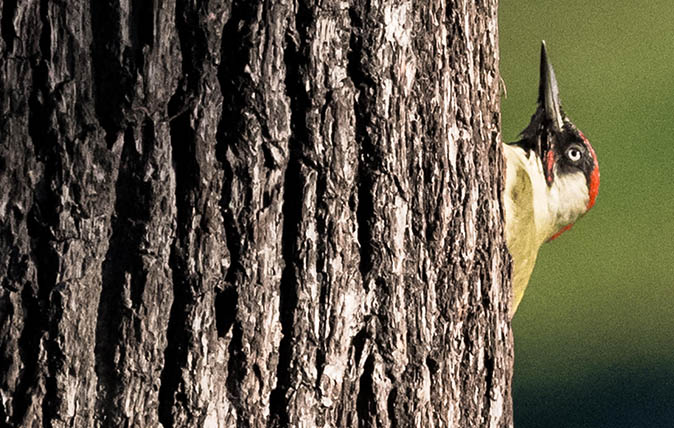Curious Questions: Why don't woodpeckers hurt their heads?
Woodpeckers submit their poor heads to punishment which would devastate most creatures, yet as far as we know they fly off quite happily after hammering away at tree trunks. Martin Fone, author of 'Fifty Curious Questions', investigates.


One of the distinctive sounds to be heard in our garden is the drilling of a woodpecker as it tries to dislodge insects from within the bark of one of the nearby trees. It has always struck me that there must be easier ways for them to get their food. After all, each time they strike the tree their beaks and head undergo forces of between 1,200 and 1,400 G, over fourteen times the force that would give a human concussion.
According to the ever popular journal Plos One, a team of scientists, led by Peter Cummings, from Boston University School of Medicine, carried out some research into the brains of woodpeckers, using exhibits from the Field Museum and Harvard Museum of Natural History. The telltale sign for brain damage, in human brains at least, is the build-up of tau protein around our axons. Normally, tau protein wraps around the axons, giving them protection and stability while preserving their flexibility. Too much of it, though, disrupts the ability of the neurons to communicate, causing no end of problems with some of the brain’s functions relating to our emotions, cognitive powers and our ability to move.
In what is thought to have been the first detailed examination of woodpecker brains, the little grey cells were removed from a number of exhibits and the amount of tau protein was compared with that to be found in the brains of Red-winged Blackbirds.
Now, of course, the woodpeckers in question may have been particularly stupid, having allowed themselves to be caught and end up in a glass case, but the researchers found that there was considerably more tau protein in their brains than in the blackbirds.
"They have particularly thick neck muscles which serve to diffuse the blow and a third inner eyelid which prevents their eyeballs from popping out"
Is this indicative of brain damage? Frustratingly, the researchers were not prepared to commit; all we got from Cummings was “We can't say that these woodpeckers definitely sustained brain injuries, but there is extra tau present in the woodpecker brain.” It is dangerous to assume that what is good for humans must also be the case for other forms of animal life so a bit more research is needed, I guess.
Empirically, though, as woodpeckers have been around for 25 million years and nature evolves – a controversial contention, I know – you would think that they would have developed mechanisms to prevent injurious damage to their bodies.
And it seems they have. Researchers have previously established that woodpeckers have particularly thick neck muscles which serve to diffuse the blow when their beak strikes the wood. They also have a third inner eyelid which prevents their eyeballs from popping out.
Exquisite houses, the beauty of Nature, and how to get the most from your life, straight to your inbox.
In 2012 scientists from Beijing’s Beihang University and the Wuhan University of Technology carried out a more detailed examination of the thick bone that surrounds and cushions the woodpecker’s brain, details of which were reported in the academic journal, Science China Life Sciences.
It appears that their brains are surrounded by a spongy bone plate made of tiny beams or rods called trabeculae. This provides a protective layer around the brain. Similarly, their beaks contain these same trabeculae. It is thought that the beak deforms during impact, absorbing the impact rather than sending it onwards towards the brain.
Martin Fone is author of 'Fifty Curious Questions', from which this piece is an excerpt – find out more about his book or you can order a copy via Amazon.
After graduating in Classics from Trinity College Cambridge and a 38 year career in the financial services sector in the City of London, Martin Fone started blogging and writing on a freelance basis as he slipped into retirement. He has developed a fearless passion for investigating the quirks and oddities of life and discovering the answers to questions most of us never even think to ask. A voracious reader, a keen but distinctly amateur gardener, and a gin enthusiast, Martin lives with his wife in Surrey. He has written five books, the latest of which is More Curious Questions.
